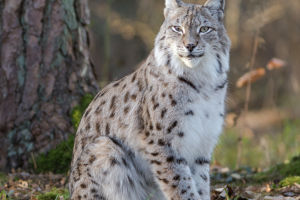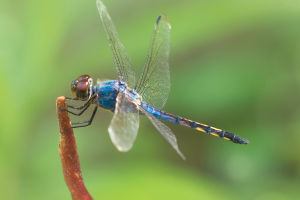The peacock is a stunning and remarkable bird belonging to the pheasant family. It is renowned globally for its magnificent plumage and unique display behavior.
Here are some essential facts about peacocks:
1. Species and Distribution: Peacocks are commonly known as Indian peafowls and belong to the genus Pavo. They are primarily found in the Indian subcontinent and Sri Lanka. Over time, they have been introduced to numerous other regions as ornamental birds.
2. Appearance: The male peacock displays vibrant and colorful plumage. Its long tail feathers feature hues of blue, green, and gold, adorned with captivating eye-shaped patterns. In contrast, female peacocks are comparatively smaller and don brownish plumage, lacking the striking appearance of the males.
3. Breeding Behavior: During courtship, male peacocks flaunt their splendid plumage. They position themselves in front of the female, spreading and shaking their tail feathers to capture her attention.
The peacock's extended tail feathers can reach lengths of approximately 1.5 to 1.8 meters, making them among the longest feathers in the avian world.
4. Diet: Peacocks are omnivorous creatures, primarily feeding on insects, small reptiles, snakes, seeds, and fruits. They typically forage on the ground, employing their robust beaks to capture prey.
5. Cultural Symbolism: Peacocks hold significant symbolic meaning in various cultures. they are revered as sacred birds, symbolizing divinity and eternal life. Chinese culture regards peacocks as auspicious symbols representing beauty and happiness.
These are merely a few fundamental facts about peacocks, as they possess numerous other intriguing characteristics and behaviors.
Keeping peacocks necessitates the provision of suitable habitats and appropriate sustenance. Here are some fundamental guidelines for peacock husbandry:
1. Habitat: Ensure a spacious habitat, such as a large outdoor cage or enclosure, allowing ample room for peacocks to move about and spread their wings.
Provide shaded areas to protect them from excessive sunlight exposure.
Offer sufficient shelter within the habitat for peacocks to rest or seek refuge when needed. Use grass, sand, or wood chips as ground cover, providing a comfortable environment for peacocks to walk and dig.
2. Feeding and Water: As omnivores, peacocks can be fed with pelleted feed as their primary food source. Additionally, supplement their diet with fresh fruits, vegetables, and insects.
Ensure a fresh and plentiful food supply, along with ample water for drinking and bathing. Peacocks enjoy hunting insects in shallow water, so provide an appropriately sized pool.
3. Healthcare: Regularly inspect the plumage and bodies of peacocks to ensure they are free from injuries or infestations.
Keep peacock feathers dry and clean. Provide a dry area where they can spread their wings and bask in the sun.
Perform routine habitat cleaning to eliminate weeds and stagnant water, reducing the likelihood of parasite infestation.
4. Socialization and Stimulation: Peacocks are social birds, so consider housing them in groups to facilitate communication and behavioral displays. Offer a variety of toys and stimuli, such as hanging toys, branches, and climbing structures, to keep peacocks active and engaged.
It is important to note that successful peacock husbandry requires experience and expertise, particularly in providing appropriate environments and sustenance. Before embarking on peacock ownership, it is advisable to consult with a veterinarian or professional bird breeder for comprehensive guidance and advice.


